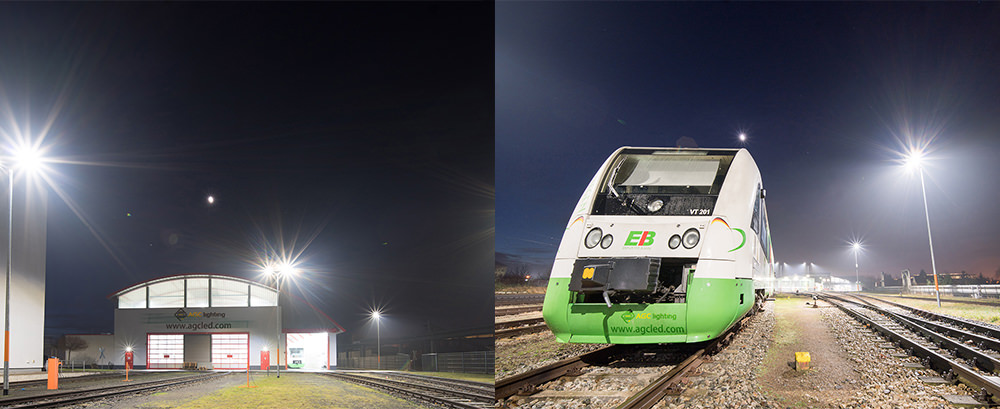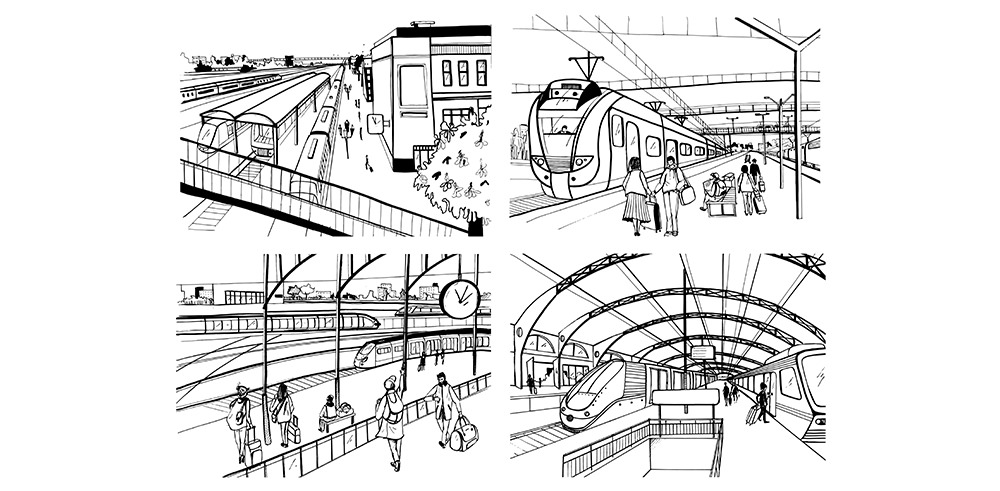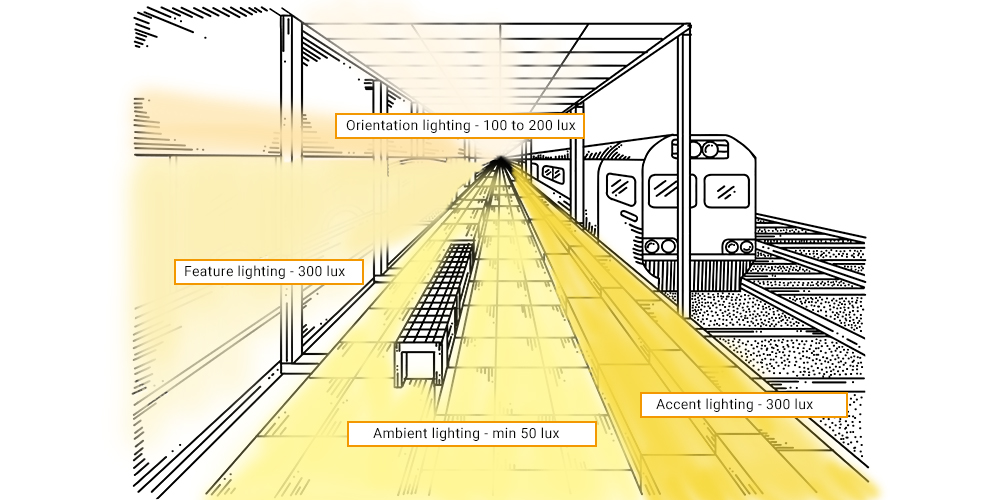Train stations are pivotal points for travelers on their journey, and the lighting within these spaces plays an important role in guiding, comforting, and ensuring the safety of millions daily. Functionally, lighting ensures adequate illumination for good visibility, safety, and security. However, it is also critical to create a comfortable and welcoming environment for passengers. Achieving the balance between functionality and comfort in train station lighting can make the movement of passengers smoother and help avoid accidents.
In this blog, let's discuss how to create a train station lighting environment that is not only safe but also pleasant for passengers.
- Considerations for safety and security
- Visibility and clarity
- Emergency lighting
- Durability and reliability
- Class II specification
- Environmentally friendly materials
- Creating a comfortable atmosphere
- Optimizing lighting levels for different zones in train stations
- Integrating smart lighting systems for higher efficiency
Considerations for safety and security
As hubs of constant activity, train stations require a lighting solution that can ensure safety and security. Here are some essential considerations for ensuring safety and security in train station lighting.
Visibility and clarity
Lighting is important in guiding passengers through the train station and towards their desired destination. Adequate lighting is crucial for visibility, helping passengers navigate platforms, ticketing areas, and exits with ease. We should pay close attention to high-risk areas such as platforms and stairwells. These spaces require higher light levels and careful light distribution to ensure clear sightlines for passengers.
Emergency lighting
When an emergency occurs, lighting is vital in guiding passengers to safety. Crowds are hard to control in the dark. Therefore, train stations should be equipped with a reliable emergency lighting system that automatically activates during power outages, directing passengers toward the nearest exits.
Durability and reliability
As vandalism can present a challenge at many train stations, lighting fixtures must be able to withstand heavy usage and environmental factors. Frequent repairs and maintenance can disrupt station operations and public safety. Durable and reliable lighting fixtures reduce unnecessary maintenance and improve cost efficiency.
Class II specification
Lighting fixtures that are directly at or close to power lines should meet Class II specifications. The double insulation, along with the absence of the earthing conductor, can ensure durability and long service life.
Environmentally friendly materials
Train stations require multiple lighting fixtures for each zone. Long-lasting and non-toxic materials can reduce the carbon footprint and minimize pollution to the environment. Toxic substances like halogens can create dark smoke during a fire, making it difficult for people to find their way. Therefore, LSZH (Low Smoke Zero Halogen) cable should be utilized in lighting systems for train stations.

Creating a comfortable atmosphere
Lighting can influence our emotions and how we perceive space. Train station lighting should be comfortable, low-glare, and safe for passengers.
Comfortable train station lighting should be glare-free. By strategically placing lighting fixtures and using uniform light distribution, we can minimize glare and help passengers find their way and read signs without any trouble. The use of lenses and reflectors in optical design also helps to banish unwanted glare.
The color temperature of lighting fixtures also helps define different zones within a train station. Warm, natural-looking light sources can create a sense of coziness and familiarity, helping to alleviate the stress and anxiety that often accompany travel. This can promote relaxation in waiting areas. Conversely, bright and cool-toned lighting can contribute to higher alertness and is better suited for ticketing and boarding areas.
Whenever possible, incorporate natural light to enhance visual comfort. Skylights and large windows can provide a connection to the outside world, helping to regulate circadian rhythms and reduce reliance on artificial lighting.
Optimizing lighting levels for different zones in train stations
To ensure a consistent and comfortable experience at train stations, lighting levels should be tailored to the needs of each zone.
- Platform and Train Tracks: These areas require a minimum illumination of 80 lux to ensure safety and visibility. For enclosed and undercover spaces, a minimum of 150 lux is required to enhance passenger safety.
- Concourse and Entryways: As the gateway to the station, the concourse should blend functionality with aesthetics. A minimum of 150 lux is required to ensure a well-lit environment, while counters require higher light intensity of about 200 lux.
- Car Parks: For parking areas, aim for an average of 15 lux 1 meter above the ground level.
- Public Realm Areas and Pathways: A minimum of 40-60 lux is required to guide passengers safely through outdoor space.

Additionally, each zone should feature a layer lighting design to enhance clarity.
Layer 1: Ambient lighting
This foundational layer provides functional and safe lighting, enabling passengers to navigate the station with ease. The ambient light level should be no less than 50 lux.
Layer 2: Accent lighting
Accent lighting highlights vertical surfaces and complements the ambient layer. It typically averages around 300 lux to draw attention to key areas.
Layer 3: Orientation lighting
Orientation lighting guides passengers through the station, creating visual cues that lead to important destinations like tunnels and walkways. This layer’s intensity ranges from 100 to 200 lux, establishing a clear visual hierarchy.
Layer 4: Feature lighting
Feature lighting adds visual interest and creates focal points within the station. It can integrate with ambient, accent, and orientation layers, with an intensity of approximately 300 lux.

Integrating smart lighting systems for higher efficiency
Integrating smart lighting systems into train stations is an approach to enhancing functionality, visual comfort, and efficiency. Smart lighting is not just about providing light; it's about creating an adaptable environment that responds in real time to the needs of the station and its users. Moreover, since train stations operate 24/7, intelligent lighting significantly reduces energy consumption and the carbon footprint.
For train station lighting, fixtures equipped with NEMA or Zhaga nodes are commonly preferred. These connected-ready solutions offer advanced features such as dimming, timing control, and group management, which contribute to a more efficient lighting system. Additionally, DALI and Casambi technologies stand out as excellent options for smart lighting, providing robust control and integration capabilities that further optimize the lighting experience.













